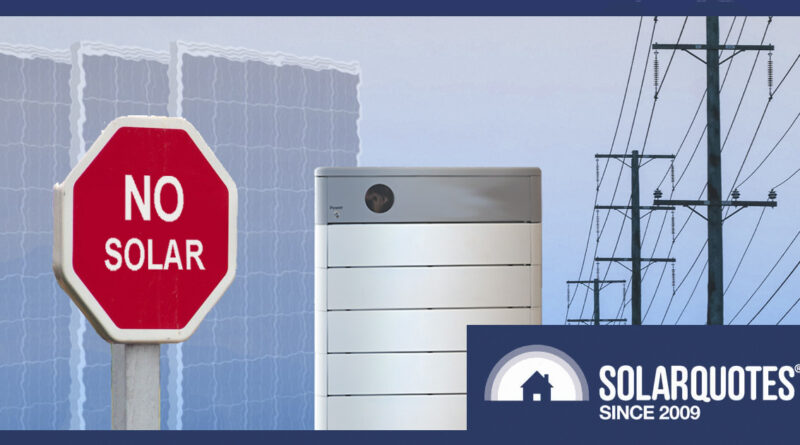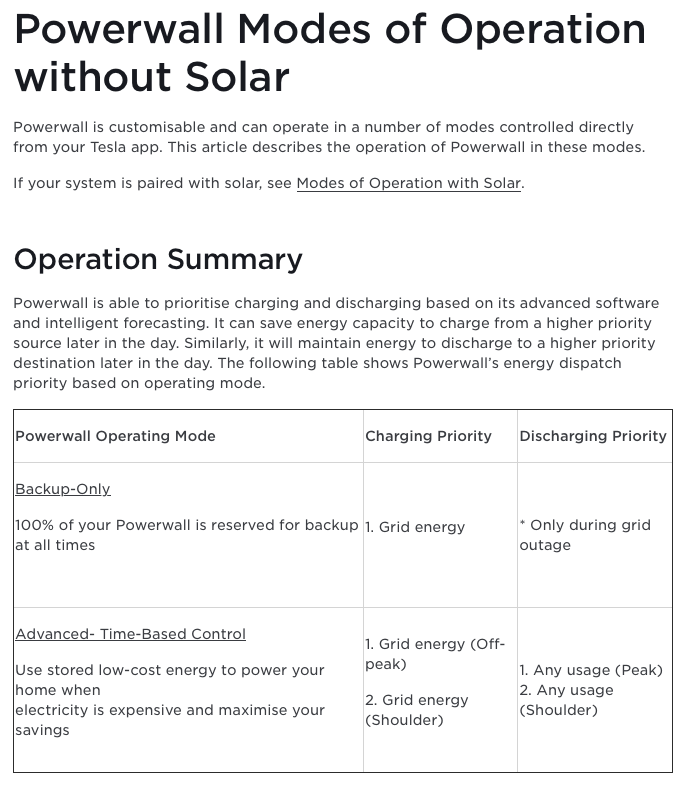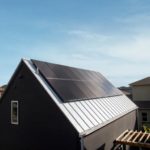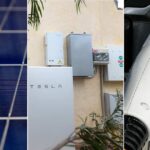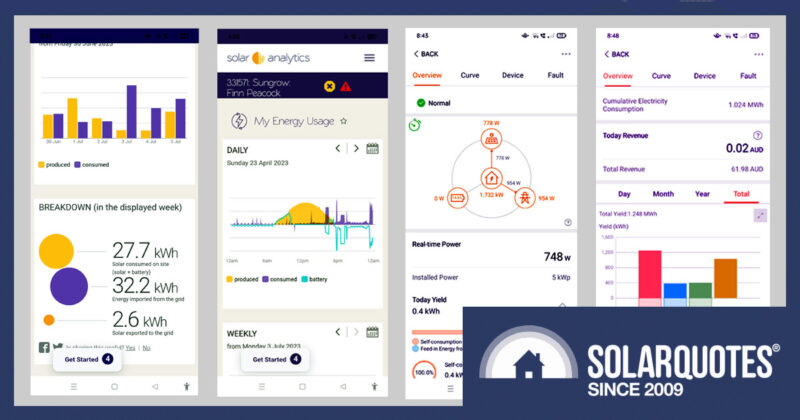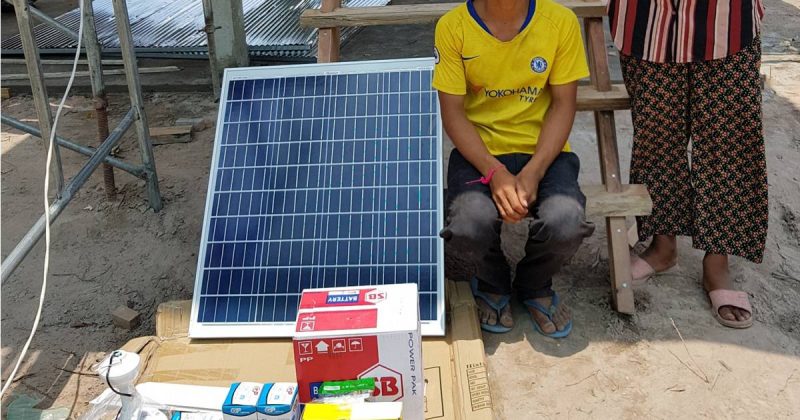Solar Batteries Without Solar Panels? No Sun, No Problem.
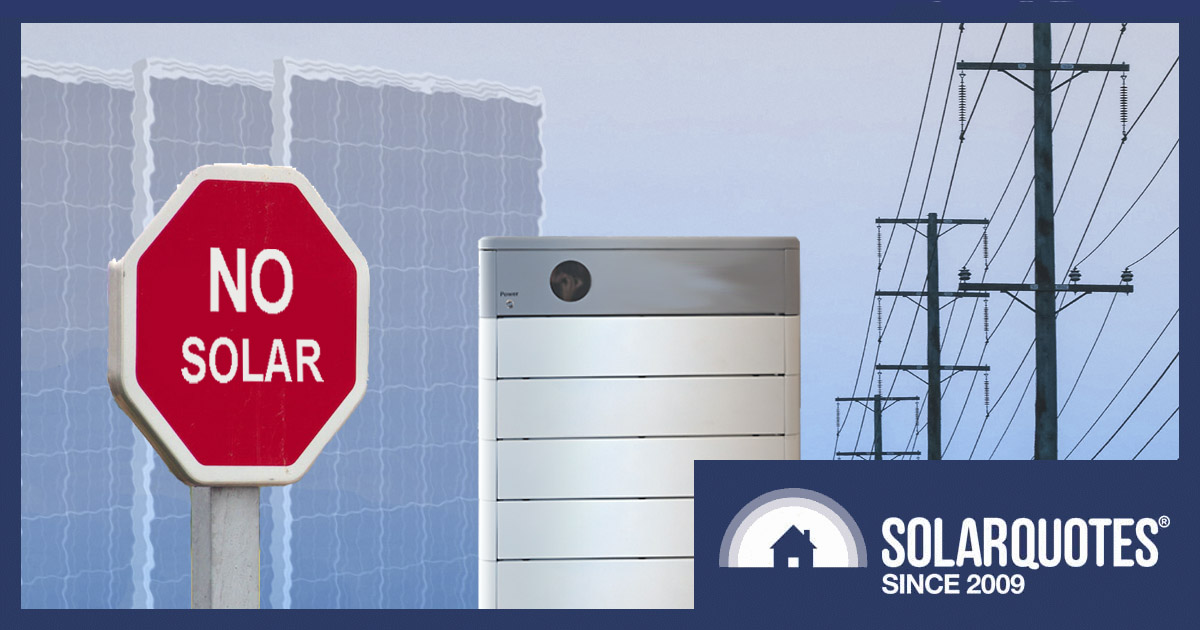
Solar panels and batteries might sound like a match made in energy heaven, but some people install batteries without solar panels. What gives?
Let’s explore the concept of charging solar batteries solely from the grid. We’ll delve into the motivations behind this choice, look at the benefits, provide practical advice on how it’s done, and point you in the right direction for products that support it.
And yes, I’ll still call them ‘solar batteries’ because they are most likely being charged with other people’s solar energy via the grid.
Why Solar Batteries Without Panels?
Why would anybody want a solar battery without panels? Some people cannot have a rooftop solar power system due to:
- Bad roof orientation
- Lack of roof space
- Shade and obstructions
- Historical or aesthetic considerations
- Structural limitations
- Apartment or strata limitations
- Renters
- Legal restrictions
- Complex roof design

Rooftop solar is out of the question for this home owner, but there’s no reason they can’t have a battery.
The Advantages Of Solar Batteries (Even Without Solar)
The full potential of battery systems is realised when paired with solar panels because that’s the cheapest energy you can get. However, batteries without solar power still offer benefits.
Backup Power
One of the primary reasons people invest in home batteries is to have a backup power source during grid outages. Regardless of whether or not you have rooftop solar panels, if the grid goes down, it can keep your lights on and provide power to essential appliances and devices.
Energy Price Arbitrage
You can take advantage of daytime super off-peak (aka “solar sponge”) pricing by charging your battery during the day (typically 10 am-3 pm) when demand is low and then using stored energy during the evening to avoid paying evening peak rates (typically 3 pm-10 pm).
You can then top up your battery overnight on off-peak and ride through the morning peak rates (typically 6 am-10 am) until the super off-peak daytime period returns at 10 am.
Here’s an example of adding a battery that will be mostly charged from super off-peak grid electricity:
This can be taken further by joining a VPP (Virtual Power Plant) or using home automation to import and export electricity according to spot prices and forecasts from your electricity retailer.
Peak Time Shaving
For those on a demand tariff, peak shaving involves reducing or ‘shaving’ the maximum power demand (kilowatts) drawn from the grid during peak periods.
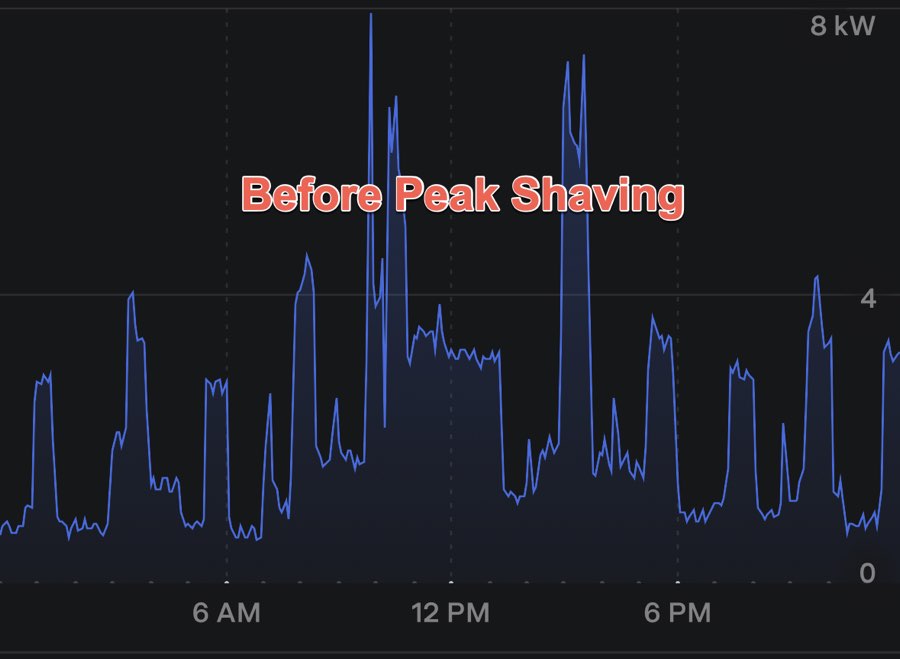
If this customer gets charged extra for all demand over 4 kW…
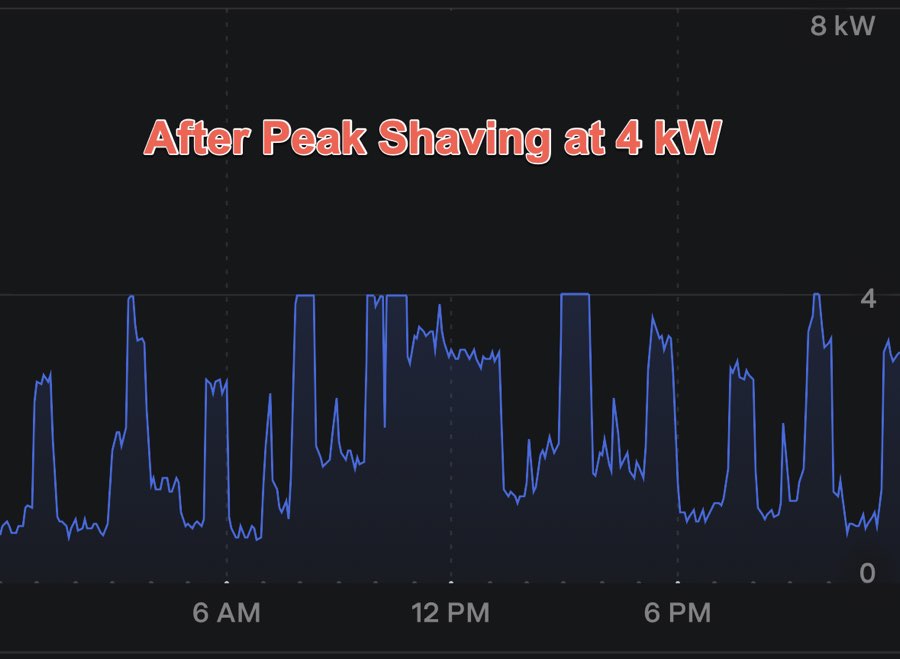
…then a battery configured to shave all peaks over 4kW can reduce the electricity bill.
As well as helping to avoid costly peak demand charges, a battery can help you reduce the overall load on the switchboard and mains, potentially delaying or eliminating the need for upgrading electrical infrastructure to accommodate higher peak demand.
Grid Support
One of the significant challenges for the electrical grid is managing peak demand periods when electricity consumption is at its highest. Home batteries can make a worthwhile contribution by reducing stress during peak demand periods, helping to balance supply and demand, and reducing the likelihood of blackouts or brownouts.
Supporting Renewable Energy
Even without solar panels, using a home battery can indirectly support the adoption of renewable energy. A battery storing electricity during high renewable energy generation periods can then discharge into the grid during peak periods, reducing the amount of gas burned in peaker plants.
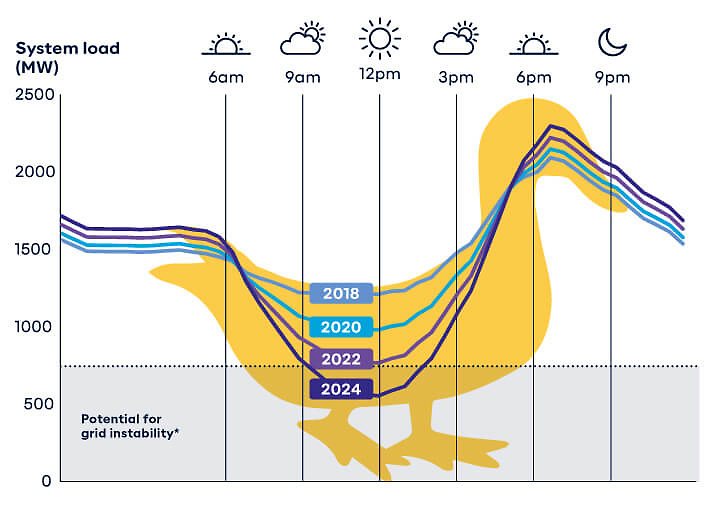
The Duck Curve refers to a graphical representation of electricity demand from the grid on days when solar energy production is high and demand in the grid is low. The graph indicates how batteries charging in the middle of the day, and discharging during peak demand hours, can flatten the duck curve, and help stabilize the grid, as well as bring all the other benefits listed above. Image: Synergy
Off-Grid Scenarios
An off-grid power system doesn’t need solar panels, or any form of renewable energy, and it will perform just fine. A petrol or dirty diesel generator will top up your battery and switch off for peace and quiet when you need it.
Resale Value
Installing a home battery could increase the resale value of your home. At least it will likely spend less time on the market, as it may appeal to buyers interested in energy-efficient features and backup.
Key Considerations
So you’ve decided that although you can’t/don’t want rooftop solar power, you’d like to go ahead and join the world of home battery owners. What next? If you’ve read up to this point, you probably have a fair idea of your battery’s main function.
The next step would be to calculate your energy needs so you can choose a system with the appropriate capacity. This would include both your daily energy (kWh), and power demand (kW). If you’re not technically minded, this step will involve talking to an energy professional.
You should also learn and understand any regulations or policies related to grid-connected battery systems in your area. This is a very important step. It would be a pity to fork out a few thousand dollars on a system you can’t use in the designated time slot.
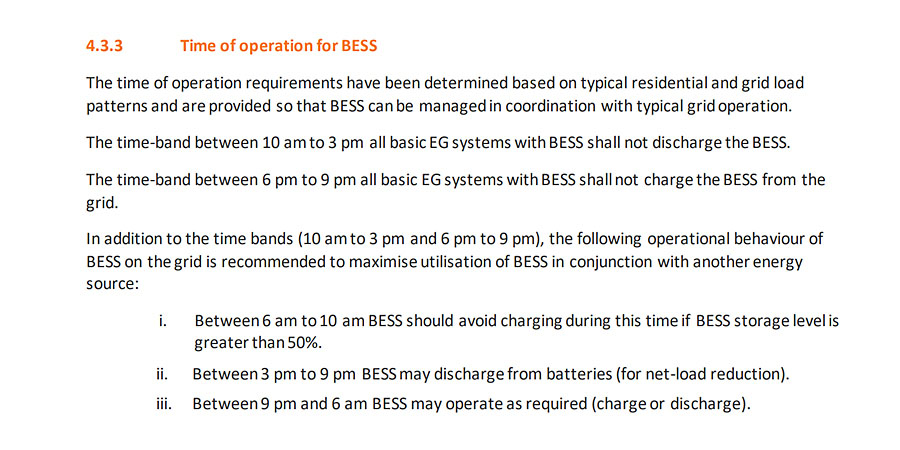
Western Power Basic Embedded Generator (EG) Connection Technical Requirements – Time of Operation for BESS (battery energy systems.) Perhaps the nuttiest electrical rule in Australia?
There’s only one more thing to consider, apart from handing over the cash; what type of battery system should you get, and what products are available for your particular needs?
Role Of The Battery Inverter
A key component of a home battery system is the battery inverter, which manages the energy flows between the battery and your home’s electrical system. This component assumes a dual role as both an inverter and a rectifier. When the grid is operational, the battery inverter rectifies incoming AC power from your home, converting it into DC power to charge the battery.
Conversely, during periods when the grid is unavailable or during high-demand scenarios, the battery inverter inverts the stored DC power back into AC power, supplying your home’s electrical system with usable energy.
Technically, it should be called a battery rectifier/inverter or power converter, but we’ll call it a battery inverter due to established terminology. Anyway, whatever you call it, you’ll need one. It is quite often already integrated into the battery itself.
Choose Your Battery Wisely
Fortunately, SolarQuotes has a very useful solar battery comparison table where you can check out all sorts of specifications. If you want to use a battery without solar panels, you should look for a battery compatible with “AC coupling” because it needs to ‘AC couple’ into your switchboard.
How To Set It Up
Assuming you’ve researched and selected a battery, it’s time to delve into the practical steps of setting up your desired functionality. Most modern battery systems come equipped with dedicated mobile apps or online portals. These allow you to customise and optimise your system’s performance.
I would recommend viewing the app or online portal before buying the battery. You could do some online research or go a step further by contacting a supplier to see if they can give you access to a portal you can play around with.
Within most apps, you can typically choose from various predefined modes like ‘Backup Power’, ‘Time-of-Use Optimization’, etc. Select the mode that you think fits best. There should be a good level of customization to help you achieve your objectives. If you’re not sure, ask questions.
The Case for Battery-Only Systems
As you can see, although rooftop solar power remains out of reach for some, that doesn’t mean they have to be locked out of the benefits that come with solar’s other half – the home solar battery. There are many good reasons for joining this community. Whatever your motivation, now armed with some knowledge, at least now you know how to charge solar batteries without your own solar panels.
Original Source: https://www.solarquotes.com.au/blog/solar-batteries-without-panels/

